We may receive a commission if you make purchases through affiliate links (at no extra cost to you). Read why our approach to travel is different.
Surrounded by the crystal clear waters of the Mediterranean, Sardinia is Italy’s island paradise. Almost equidistant between the Italian mainland and the North African coast, the Med’s second-largest island is a natural meeting point of cultures.
Most travelers who reach Sardinia’s shores make the journey for the beaches. And beaches, Sardinia does with a vengeance. It has some of the most beautiful in Europe. A wonderful mix of miles-long stretches of golden sand, rugged headlands laced with hidden coves and rolling dunes, Sardinia is ideal for relaxing and forgetting the world or exploring and discovering it.

Our ultimate Sardinia itinerary includes plenty of beaches; it would be wrong not to. But it goes beyond, too. Away from the serene coastline, Sardinia’s mountainous interior is peppered with neolithic monuments, medieval castles and hillside Romanesque churches. Over the course of seven days, our Sardinia itinerary showcases the best coast, countryside and cities this endearing island has to offer.
Skip to...
When to Visit Sardinia
Given its Mediterranean location, Sardinia enjoys a fairly calm, mild climate. That said, as you work your way through this Sardinia itinerary, you’ll see some noticeable changes from place to place. Coastal areas tend to see the best weather. As you travel inland temperatures often drop and, in winter, snow showers aren’t uncommon in the mountains.
Summer (June, July and August) brings the best of the weather. Average temperatures on the coast hover around 25°C (77°F) and there’s very little rain.
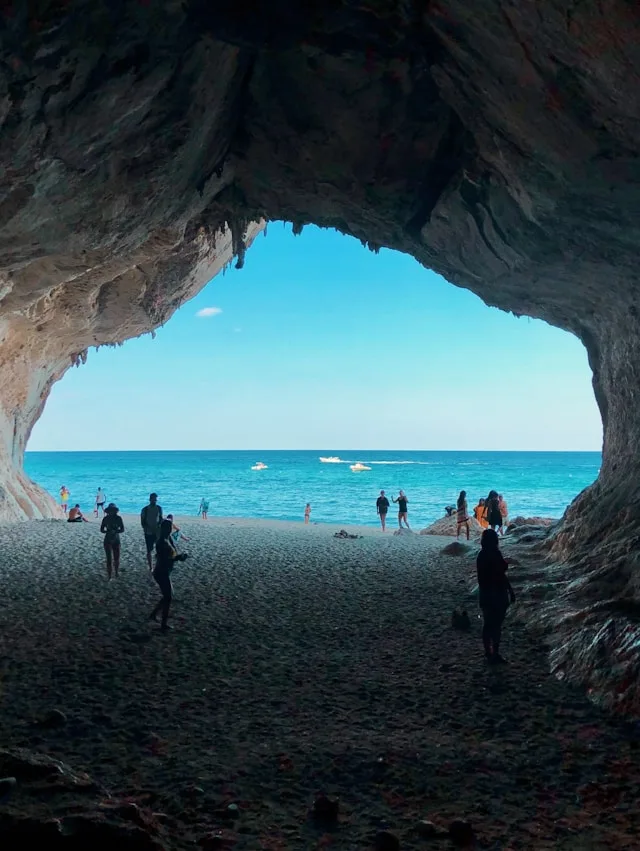
Like most of Mediterranean Europe, Sardinia is a popular family holiday destination. Unless you’re traveling with children, avoiding school summer holidays has its benefits. May, June and September are my favorite months to visit Sardinia- you’ll be able to enjoy good weather and seasonal attractions and restaurants will be open, but the crowds will be far fewer.
Getting to Sardinia
The easiest and most popular way to reach Sardinia is to fly. The island has three main commercial airports: Cagliari Elmas (CAG), Alghero-Fertilia (AHO) and Olbia Costa Smeralda (OLB). All three are heavily seasonal in terms of connectivity, but year-round routes do exist from across Europe. Low-cost carriers have a very strong presence in Sardinia, and flights from within Europe are often excellent value.
Travel Tip: On 20th May 2026, Delta will launch seasonal flights from New York JFK to Olbia, giving North American visitors a direct link to the island for the first time, so there’s no better time to start planning your Sardinia itinerary.
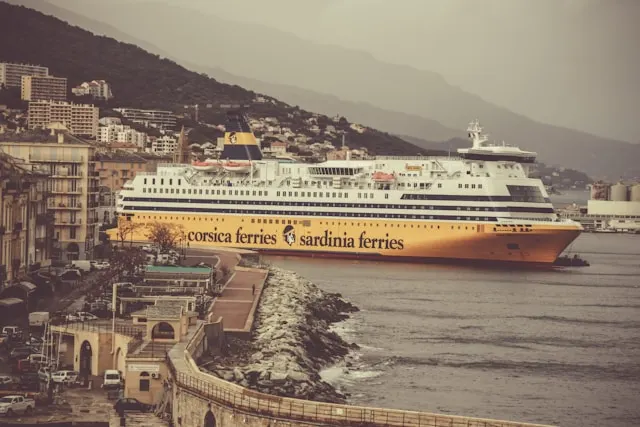
If you’re thinking of tagging this Sardinia itinerary onto a longer Europe trip, there is another way to reach the island. Several ferry routes serve Sardinia. These come in particularly handy if you’ve hired or brought your own car.
My favorite addition to a Sardinia trip is to travel through France, take the ferry from Nice to Bastia and spend a few days exploring Corsica. Then, take another ferry from Bonifacio at the southern tip of the island to Santa Teresa Gallura to kick off your Sardinia itinerary.

Alternative ferry routes exist from Genoa, Livorno, Piombino and Rome in Italy. From the French mainland, seasonal ferries operate from Nice and Toulon. There’s also a three-times-weekly sailing from Barcelona.
The Ultimate 1-Week Sardinia Itinerary
Days 1 & 2- Cagliari
Where to Stay in Cagliari
The island’s capital and largest city is always a hive of activity. Home to 146,000 inhabitants, it’s big enough to be lively, and small enough to be walkable. Wherever you stay in the city center, you won’t be far from the sights. The majority of hotels are concentrated around Villanova and Bonaria.
Villanova
Deceptively named Villanova, which translates from Latin as “new town”, is one of the most historic neighborhoods in Cagliari. Built up from the late 13th century, it runs downhill from the city center to the marina.

Casa Clat Boutique Hotel is my favorite place to stay in Cagliari. At the marina end of Villanova, this swish all suite hotel is centered around a courtyard garden with an outdoor pool. Perks include free breakfast and a poolside restaurant.
If you want to be closer still to the ocean, Miramare Cagliari Hotel Museo offers rooms with a marina view. Slightly further inland, across from the cathedral, Il Giardino Segreto is the best traditional guesthouse in Villanova and offers excellent value. Most rooms come with a private balcony or patio.
Bonaria
To the east of Villanova, Bonaria is set around Cagliari’s largest park (conveniently called Bonaria Park). Harborfront Palazzo Tirso is our top pick here. The rooftop, complete with a bar and hot tub, is the perfect place to unwind and watch the sunset. It’s well worth upgrading to a sea view room.
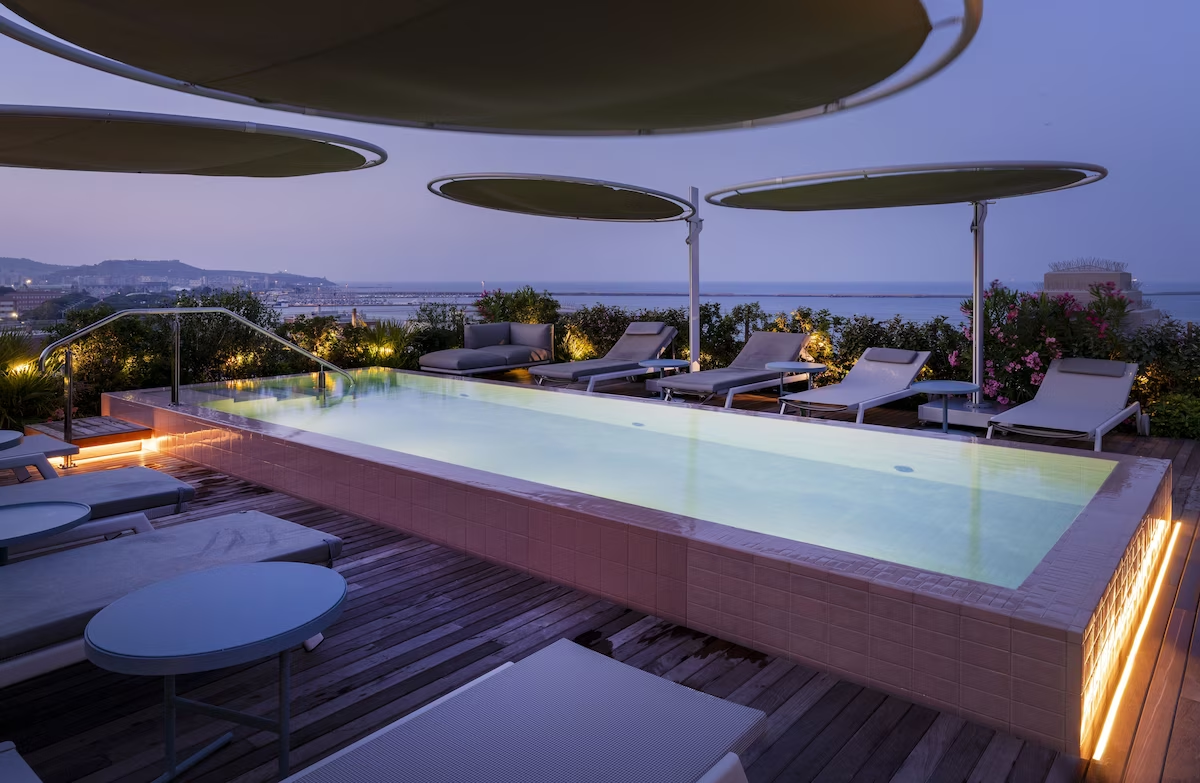
Bonaria is also home to Cagliari’s best value hotel. Guest House Sonnino 37, at the side of the park and just one street back from the water, the rooms are bright and modern and as soon as you arrive, it feels as if you’re part of the family.
Poetto
A little further from the city center, though still within walking distance, Poetto is where you’ll find Cagliari’s best beaches. Hotel Poetto is unequivocally the best option here. It’s fresh, modern and basic, yet homely and couldn’t be closer to the sand. For a little more luxury, La Villa del Mare won’t disappoint.

What to Eat in Cagliari
If this is your first Sardinia itinerary, you’ve probably been pondering that age-old question: what came first? Sardinia or sardines. An internet search won’t help much; you’ll be told that sardines are named after Sardinia and that Sardinia is named after sardines.
I’m not going to be that much help either: which physically came first, I don’t know. What I can tell you, though, is that the name Sardinia first appeared on the Nora Stone, a Phoenician inscription thought to date from the 8th century BC. The word sardine didn’t appear in English until the 15th century, itself derived from the Latin sardinia.
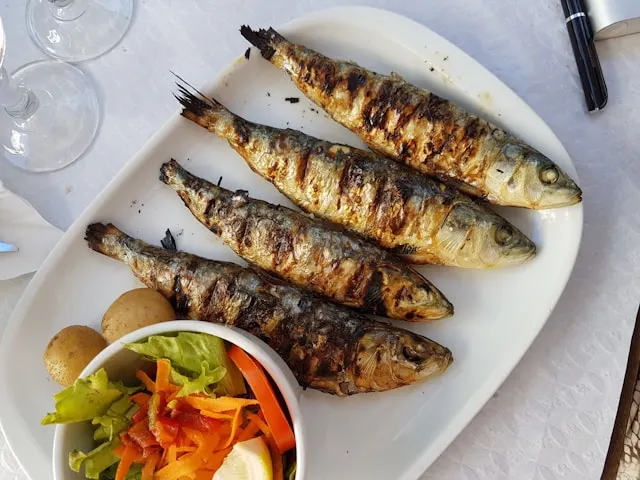
Either way, Sardinian sardines are delicious, and you really should try some during your time on the island. The best place to do just that in Cagliari is Trattoria Lillicu in Villanova.
Unusually for an island, seafood isn’t the mainstay of Sardinian cuisine. Meat and pasta are far more prominent. Sardinia’s pseudo-national dish of spit-roasted pork, porceddu, has to feature during your Sardinia itinerary. Head to Su Cumbidu, just north of the marina, for the best in Cagliari.

Top Things to Do in Cagliari
Starting your Sardinia itinerary in Cagliari is a great way to get a feel for the unique Sardinian way of life. Kick off your time here with a guided walking tour of the old town.
Cagliari grew to prominence during the Phoenician era. The initial settlement, Karaly, was slightly west of what is now the old town. When the Romans arrived just before the start of the Common Era, they built their settlement, Caralis, to the east.
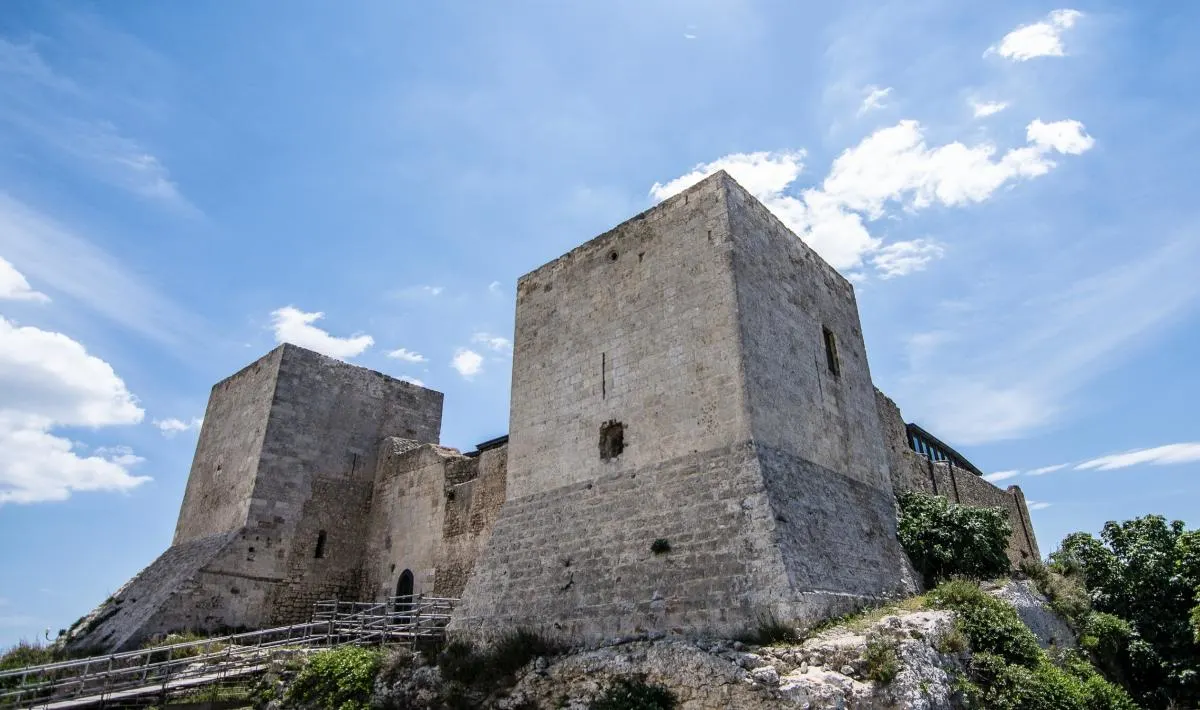
Take a walk up to the medieval castle to admire the views of the cityscape below. Whilst you’re there, it’s well worth taking a tour of the surrounding Castello district. The castle aside, it’s home to some of the city’s most iconic landmarks including Santa Maria Cathedral.
The streets beneath Castello are littered with a network of underground passageways. Some are relics from the original Roman city, others added as recently as the Second World War. Whilst Sardinia was never invaded, it served as a strategically important Italian air base and Cagliari in particular was heavily bombed. Learn more about this hidden side of the city on a guided underground walk.

For one final history lesson, pay a visit to National Archaeological Museum. This is a great way to get a feel for the island’s ancient history, something we’ll encounter a lot of as we work our way through this Sardinia itinerary.
Whatever you do in Cagliari, allow some time to unwind and enjoy the scenery. Take a boat trip to the Devil’s Saddle, sample local wine or try your hand at cooking up some Sardinian delicacies.
Day 3- Cagliari to Costa Rei
Leaving bustling Cagliari behind, today’s journey is one of the most relaxed on this Sardinia itinerary. Hugging the coast, head for Porto Sa Ruxi. The village itself is a blink and you’ll miss it kind of place; the beaches will leave you rubbing your eyes in disbelief.
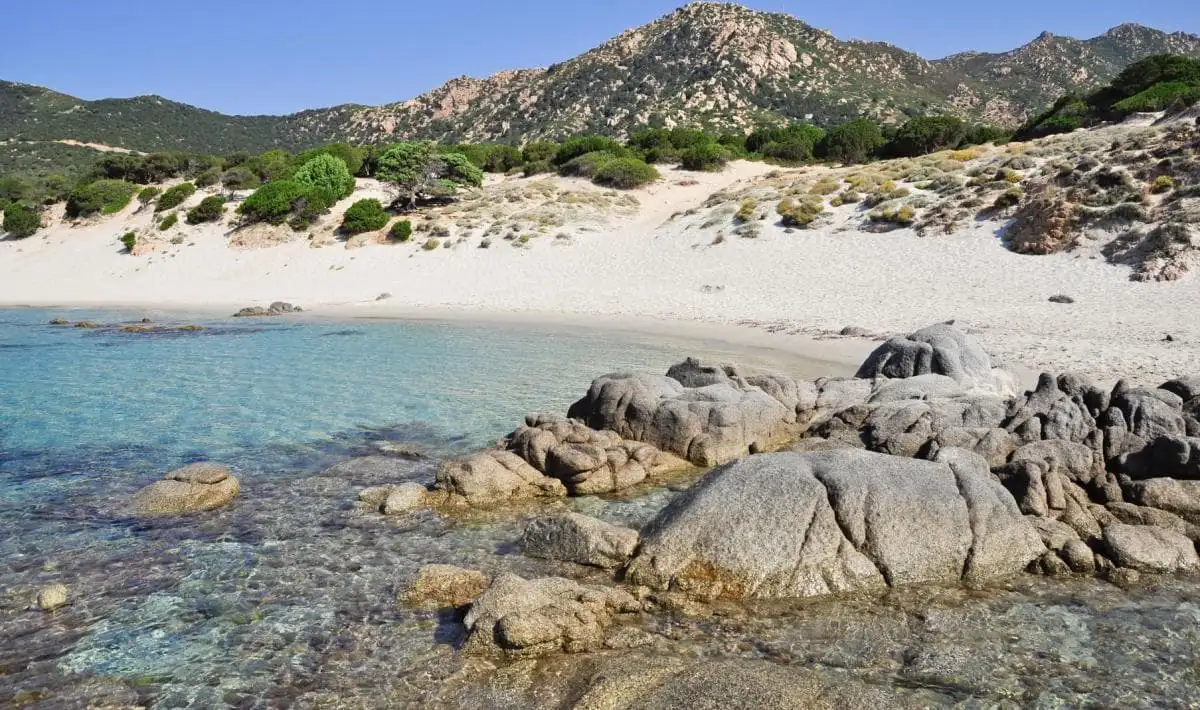
Stick to the coast, skirting Villasimius, to reach Capo Carbonara. Pause for lunch in Notteri. Marina-side Restaurant La Vela is the best spot in town and a must for seafood lovers. Spend the afternoon hiking to the southern extreme of the cape or take a taxi boat to Cavoli Island, keeping your eyes peeled for dolphins along the way.
As evening falls, follow the east coast to the north in time for dinner in Costa Rei. Take a seat outside Nou Restaurant and tuck in to traditionally cooked lamb, seafood tagliatelle or homemade risotto.

Where to Stay in Costa Rei
Costa Rei’s quietness does come with a caveat: there isn’t too much choice of accommodation away from villas and apartments. There are, however, a couple of fantastic options just outside the town center. Cala Sinzias and Tenuta Feraxi both come with enviable beachfront locations.
Day 4- Costa Rei to Arbatax
Today, our Sardinia itinerary gives you your first glimpse of the Sardinian interior. Stop off in San Vito for a stroll up to Sa Perda Manna, a hilltop viewpoint offering a sweeping vista over the town, before pushing for the mountains.
Grab a quick pizza lunch at Stella Blu in Ballo before a wander around lush Corre ‘e Arenas riverside park. This afternoon, follow the winding road to Nuraghe Arrubiu. Megalithic nuraghes are dotted all around the Sardinian countryside; Arrubiu is one of the largest and best preserved.
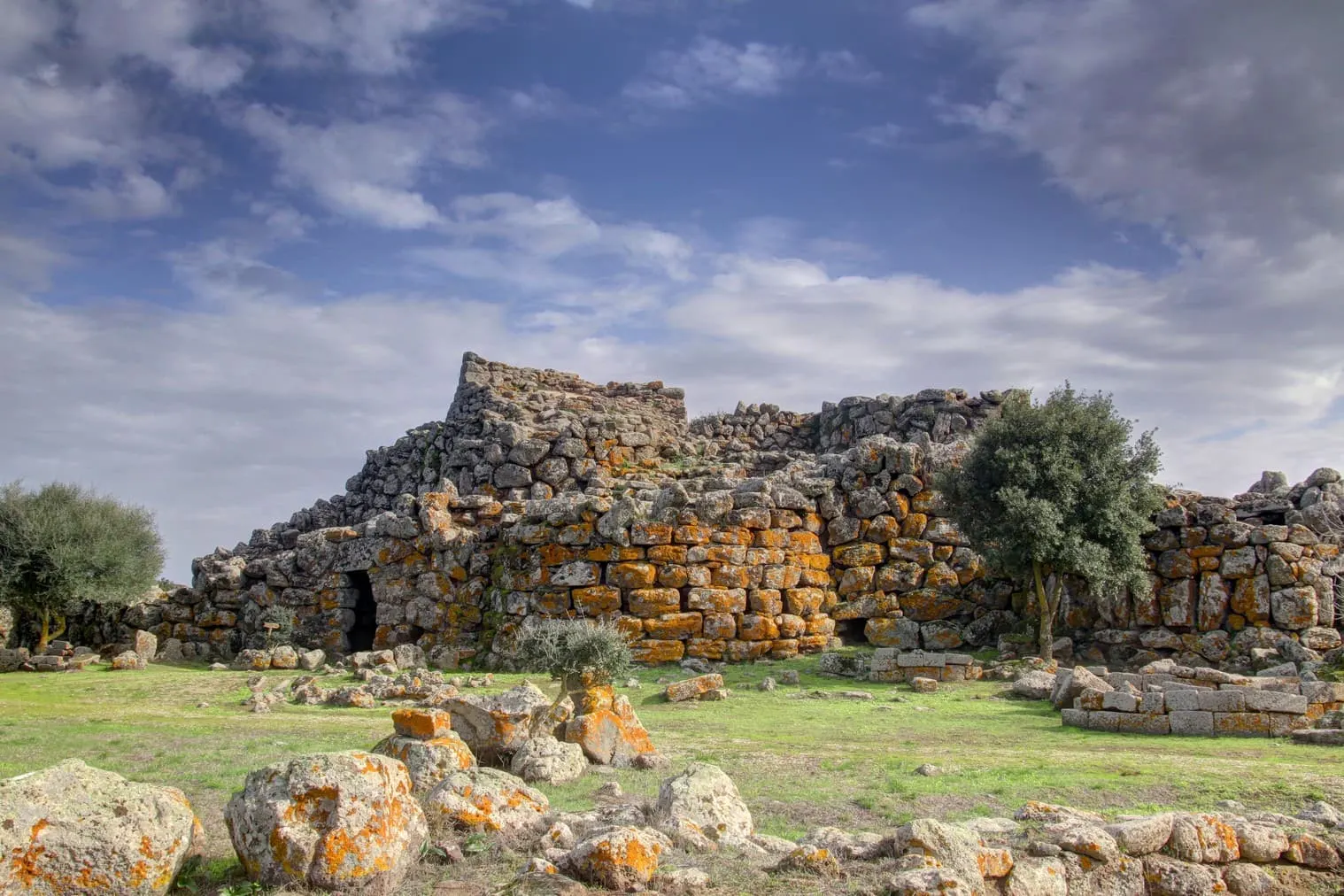
This afternoon’s drive is one of the more challenging, but most rewarding on our Sardinia itinerary. Around every hairpin bend is another sensational view. Be prepared for a long journey; photo stops are non-negotiable.
If time permits, make a stop at Bosco Seleni Archaeological Park before finding yourself in the coastal town of Arbatax, home for the fourth night on this Sardinia itinerary.
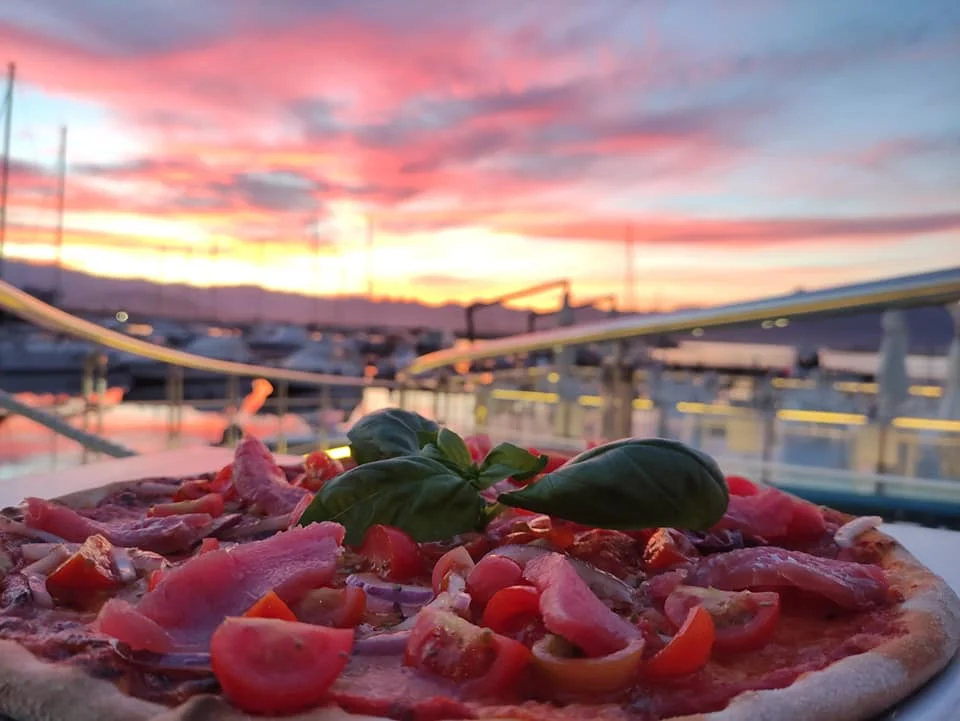
Where to Stay in Arbatax
Arbatax is a busy, yet relaxed resort and accommodation options during the high season are plentiful. Arbatasar Hotel, complete with indoor and outdoor pools and an excellent restaurant, is our top pick. For ultimate relaxation, adults only Hotel Monte Turri boasts a private beach. Charme Hotel La Bitta has the best sea views.
Day 5- Arbatax to S’Archittu
A leisurely start to Day 5 of our Sardinia itinerary gives you the chance to explore Arbatax. Take a gentle stroll along the beach to the Red Rocks. If you’re up early enough, they are especially stunning at sunrise.
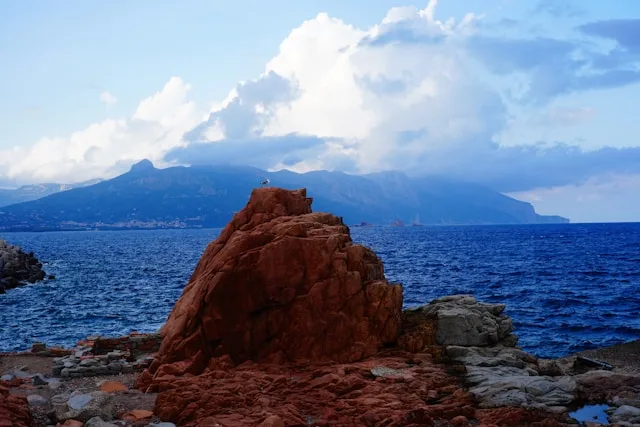
Today’s drive crosses the island from east to west. Skimming around the rugged peaks, pause atop Correboi Pass to take in the scenery. Next, make a stop at Nivola Museum to admire the works of Sardinian artist Costantino Nivola.
Take a short detour for a photo of Roccia Il Funghi (Mushroom Rock), a quirky geological formation which has an uncanny resemblance to a mushroom.
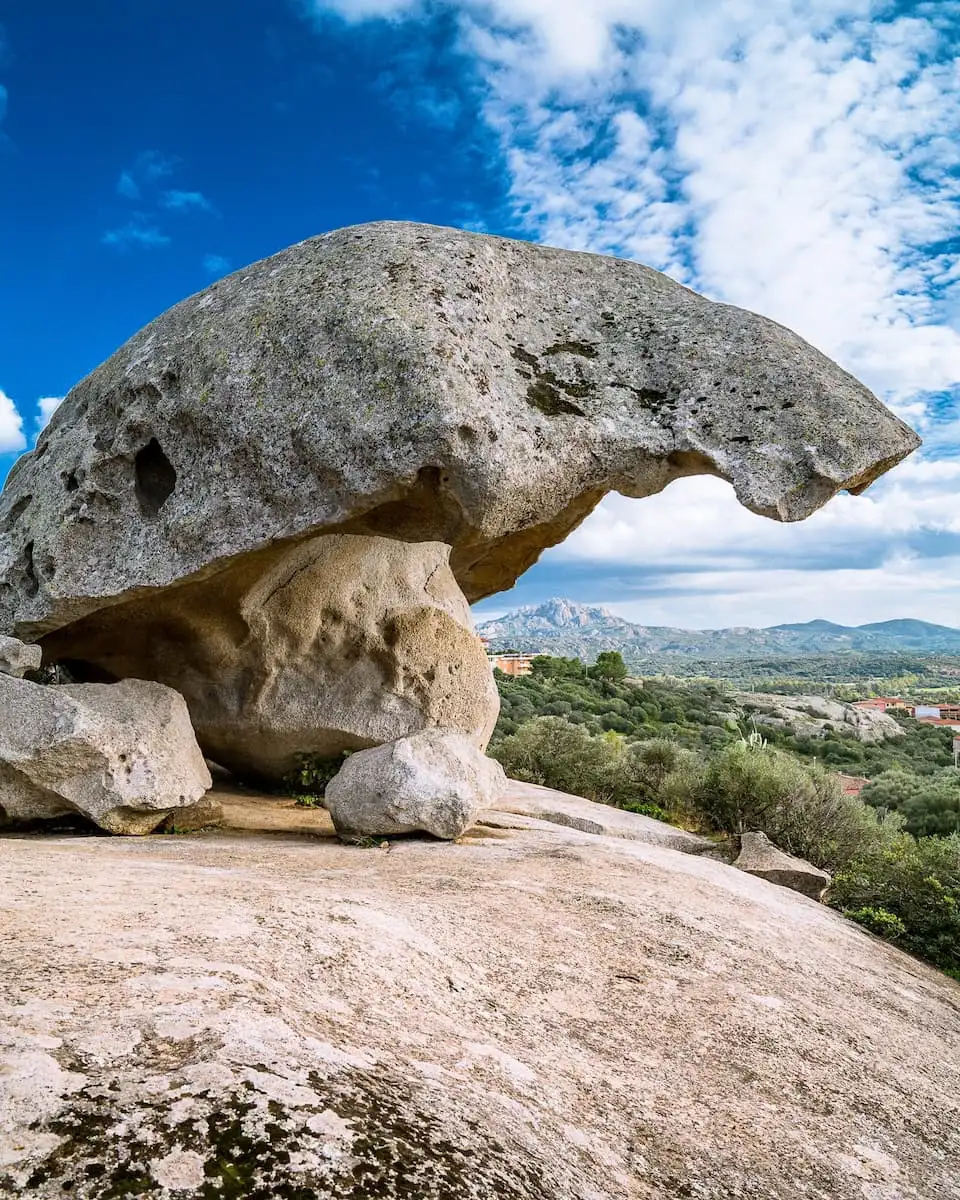
Make one final stop at the salt flats of Stagno di Sale de Porcus before reaching S’Archittu. For dinner, head to beachside Altamarea. Watching the sunset over the Med accompanied by fresh seafood and a glass of local white is a highlight of any Sardinia itinerary.
Where to Stay in S’Archittu
Hotel La Baja is the place to stay in S’Archittu. Expect glorious sea views, an outdoor pool and complimentary breakfast. If you fancy a night away from the coast, Is Benas Country Lodge is a good alternative.
Day 6- S’Archittu to Sassari
Leaving the west coast behind, our Sardinia itinerary heads north towards Sassari, Sardinia’s second city. Stop first in Cuglieri to visit the ruins of Etzu Castle and marvel at the whitewashed interior of Basilica di Santa Maria della Neve.
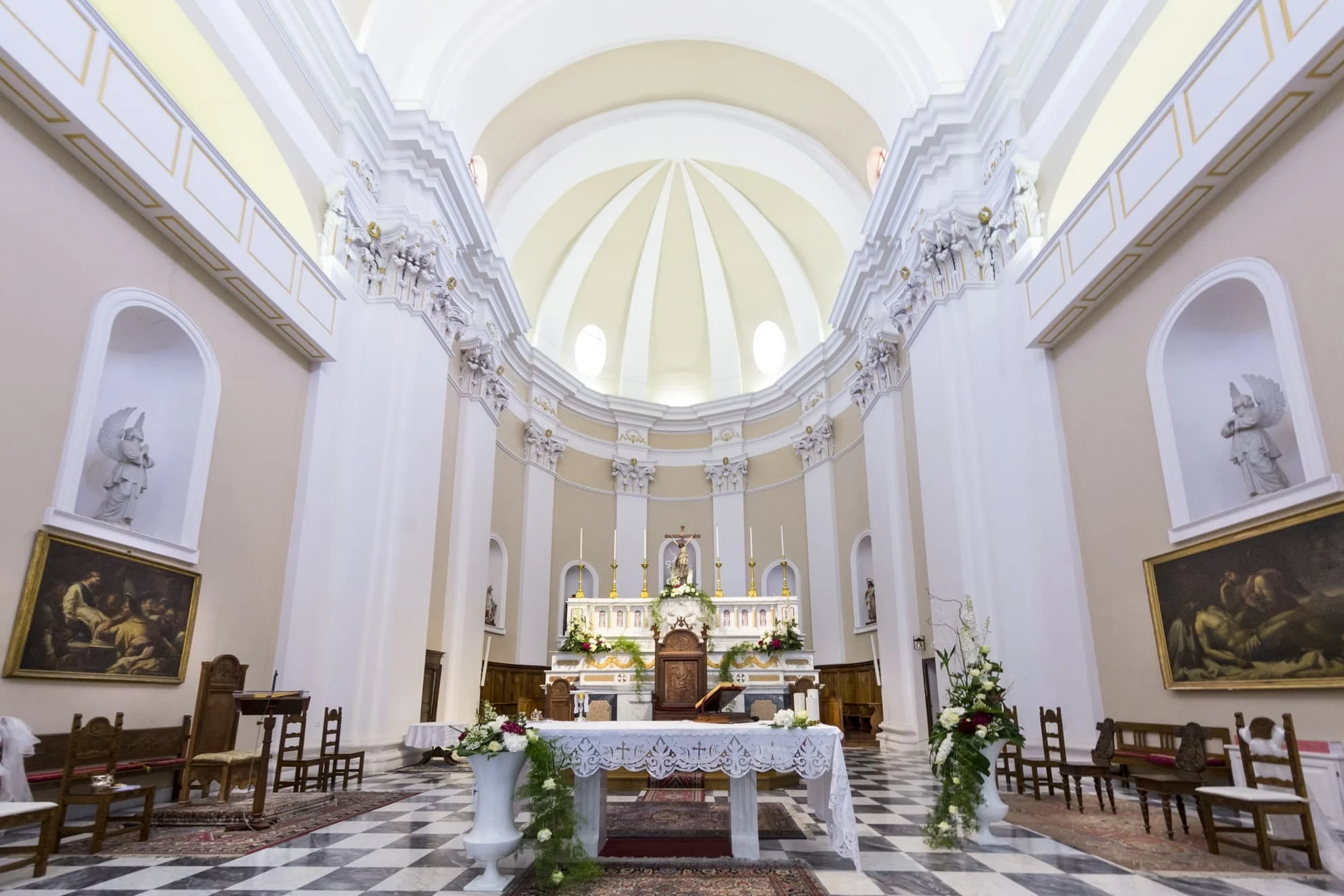
Take a trip back in time at the Conce Museum and admire the views from the Castle of Serravalle in Bosa. Grab lunch at Trattoria al Pirata beside the Temo River before turning inland to reach Sassari by early afternoon.
Spend the afternoon exploring the city with a guided walking tour. If you prefer to explore independently, be sure to visit 18th century Ducal Palace, the National Picture Gallery and the Giovanni Antonia Sanna Museum.
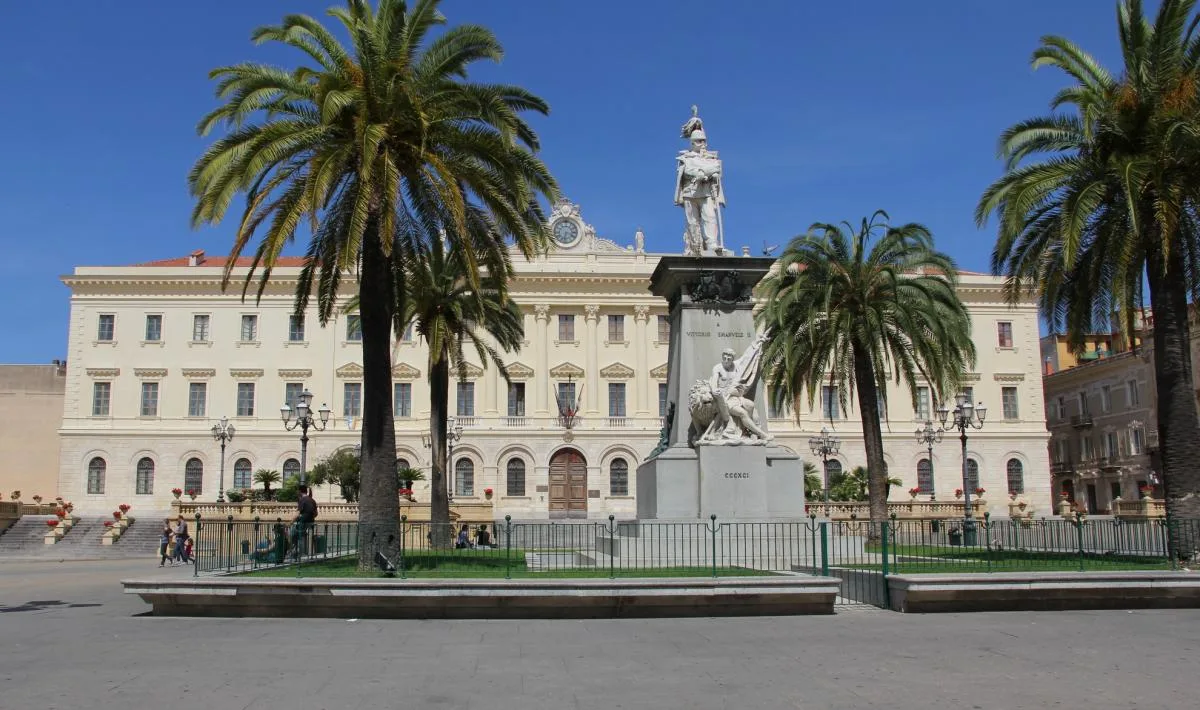
Where to Stay in Sassari
The largest city on this Sardinia itinerary since leaving Cagliari, Sassari has a great range of hotels and, being inland, benefits from far lower prices than the coastal towns. Hotel Leonardo Da Vinci is our top pick here. B&B Hotel Sassari is a great choice if you prefer something a little more modern.
Day 7- Sassari to Olbia
The final day of our Sassari itinerary comes to an end on the east coast, but not before a short detour west to visit Castrum Romano Park. On the site of the former Roman garrison, Romano Park is an accurate reconstruction of the site in its heyday.

Embarking on the final leg of our Sardinia itinerary, there are two routes you can take. If you want to spend the afternoon exploring Olbia, follow the faster inland road. For a more scenic drive, hug the north coast past Castelsardo and Portobello to Santa Terresa Gallura, Sardinia’s northernmost settlement. On a clear day, you’ll be able to make out the Corsican coast in the distance.
When you reach Olbia, make a beeline for the harbor to join a dolphin watching boat trip. Back on solid ground, there’s time for one last taste of traditional Sardinian delights. Head to Ristorante La Lanterna to tuck in to seafood fregola, fresh mussels or a Fisherman’s Pizza.

Where to Stay in Olbia
A tourist hotspot, Olbia has an endless list of hotels to suit all budgets. With just one night here to end our Sardinia itinerary, you’ll want to choose a hotel in the old town. Hotel Panorama is our favorite spot. Right in the heart of the city, the rooms are traditionally furnished and all come with a complimentary breakfast. Hotel Regina Elina offers a touch of luxury whilst Cavour is a great, budget-friendly option.
Proudly powered by WordPress